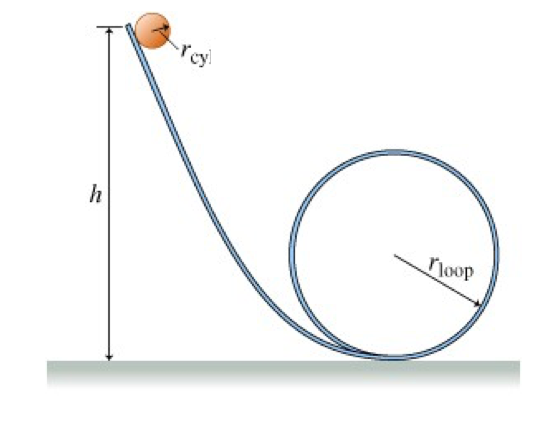A ball rolls down a long ramp without slipping, and then enters a Loop-D-Loop. (a) Choose the following values. None of them can be 0. Numbers can be picked by expert i. The mass of the ball ii. The radius of the ball iii. The radius of the Loop-D-Loop (b) Draw two photos – one at the top of the ramp, and one at the top of the Loop-D-Loop. (c) Set origin and axes. (d) Suppose at the top of the Loop-D-Loop the ball feels only the weight force. Draw the free- body diagram at the top of the Loop-D-Loop. (e) Calculate the weight force, and use it in the equation for centripetal acceleration to find the linear velocity of the ball at the top of the Loop-D-Loop. (f) Calculate the angular velocity of the ball at the top of the Loop-D-Loop. (g) Use Conservation of energy to determine the initial height of the ball. Remember, there’s no work out due to friction, and the ball starts at rest.
A ball rolls down a long ramp without slipping, and then enters a Loop-D-Loop. (a) Choose the following values. None of them can be 0. Numbers can be picked by expert
i. The mass of the ball
ii. The radius of the ball
iii. The radius of the Loop-D-Loop
(b) Draw two photos – one at the top of the ramp, and one at the top of the Loop-D-Loop.
(c) Set origin and axes.
(d) Suppose at the top of the Loop-D-Loop the ball feels only the weight force. Draw the free- body diagram at the top of the Loop-D-Loop.
(e) Calculate the weight force, and use it in the equation for centripetal acceleration to find the linear velocity of the ball at the top of the Loop-D-Loop.
(f) Calculate the
(g) Use Conservation of energy to determine the initial height of the ball. Remember, there’s no work out due to friction, and the ball starts at rest.

Step by step
Solved in 3 steps with 4 images








